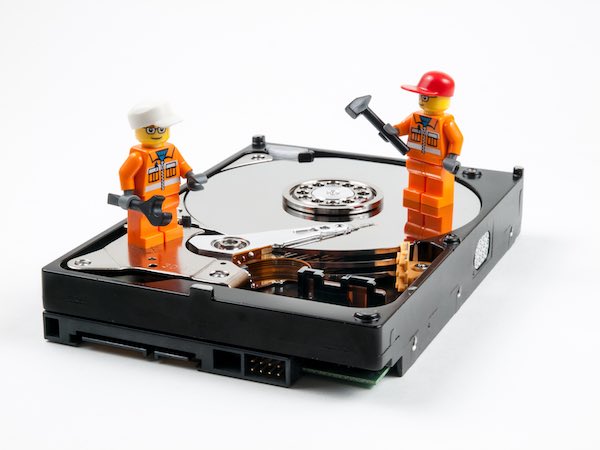
[Image above] Credit: William Warby; Flickr CC BY 2.0
Although we’re now sure that glass windows aren’t flowing slowly towards the earth, it has also becoming definitively evident that glass is expanding its place in the modern world—we’re in the Glass Age, and glass is getting itself into new and interesting places.
Like the shiny outside surfaces of the new Apple iPhone. And these glass data storage discs that can archive 360 TB of data by coding nanostructured dots etched into glass in 5-D.
It’s all because glass is stronger, more durable, and more versatile than ever, thanks to fundamental research into this once mysterious amorphous material.
Now, according to an ExtremeTech article, computer hard disk drives are going the way of glass, too.
Hard drives work by writing data onto a thin-film layer of a magnetically sensitive material, grain by grain. That magnetic material rests upon a substrate disk, called a platter, that has traditionally been aluminum.
In the past few decades, however, glass has started to replace aluminum in some hard drive platters because the material is more thermally stable, has a smoother surface, and forges thinner and lighter platters than those made of aluminum—altogether, that means glass lasts longer and allows more data storage in a more compact package, similar to trends taking place in the world of batteries.
Most hard disk drives in laptop computers actually already use glass substrates, although many desktop computers, which have bigger (in size and capacity) disk drives, still use aluminum.
However, according to the ExtremeTech article, Japanese company Hoya is developing glass platters that it is betting will be increasingly incorporated into the larger hard disk drives that are used in desktop computers.
The company’s prototype glass platters are just 0.381 mm thick, whereas current aluminum platters of the same size are 0.635 mm thick—the glass platters are 40% thinner, meaning that more platters that can store more data can be packed into the same-sized package.
Hoya is setting its sights on large-scale glass data storage, with reported capabilities of reaching 20 TB capacities in just a few more years.
Although solid state drives are becoming a preferred means of storage, hard disk drives offer higher data storage capability at a lower cost. So signs indicate it’s not doom and gloom for hard disk drives (HDDs), even in the wake of increasingly favored solid-state drives. “The long-term future of HDDs likely rests with high capacity HDDs, particularly in data centers serving cloud storage applications,” according to a Forbes article.
And increased storage capacity in a same-sized package is a tantalizing prospect for data storage centers, which would be able to increase data storage capacity without changes to the facilities themselves (e.g., disk rack sizes).
So even though the hard disk drive market has been contracting in the past few years, this is still a huge business, reaching revenues of $27 billion in 2016—and representing significant market potential for glass to grab.
Did you find this article interesting? Subscribe to the Ceramic Tech Today newsletter to continue to read more articles about the latest news in the ceramic and glass industry! Visit this link to get started.
Author
April Gocha
CTT Categories
- Electronics
- Glass
- Manufacturing
- Material Innovations


